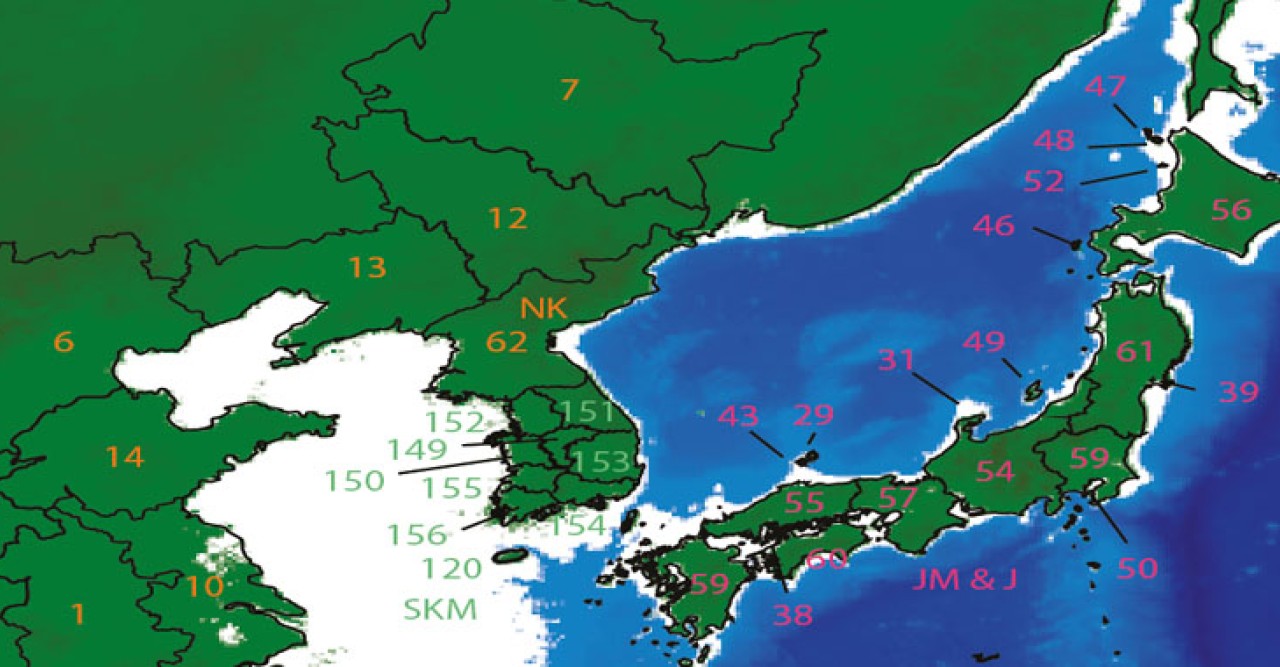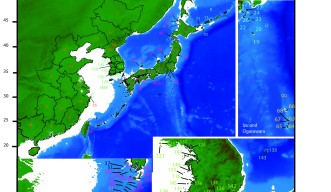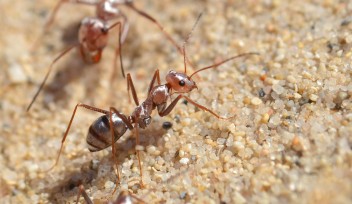Ancient Ants Leaving a Modern Trail

It is thought that ants evolved about 150 million years ago and have risen to dominance in the past 60 million years. They are now everywhere and while they are not always welcome on your kitchen counter, they are critical to ecosystems around the world for many roles, including seed dispersal and decomposition. There are a variety of factors that can impact diversity in geographically-clustered ant communities, but it can be difficult to decipher the most important biogeographic influences on these ant populations. Patricia Wepfer, Dr. Benoit Guénard (currently at the University of Hong Kong), and Prof. Evan Economo from the Biodiversity and Biocomplexity Unit at Okinawa Institute of Science and Technology Graduate University (OIST) unravelled the web of biogeographic components to find the influences that most significantly affect ant communities. They recently published their results in the Journal of Biogeography.
“I was interested in how different these communities could be across Asia,” Patricia Wepfer, first author and OIST Ph.D. student said. “We wanted to know how a community [of ants] is composed in different places and why it is composed in that way.”
The team assembled a large dataset of ant species occurrence records for 159 areas in Asia ranging from the Ryukyu Islands to Taiwan and coastal regions of South Korea. From this data, they determined which ants existed where and what factors may be affecting the communities.
They then analysed whether the climate – temperature, rainfall – and/or space – geographical distance, water barriers – made more of a difference to the composition of ant communities. The researchers also looked more closely to see whether historical land connections significantly affect ant communities. During the Last Glacial Maximum in the Pleistocene Epoch, approximately 26,000 years ago, many areas and islands in Asia were connected. As the land moved, the ocean began to cover these areas and create separate land masses. Surprisingly, ant population configurations of today are very much influenced by these past land connections that existed in the Pleistocene.
“Interestingly, the past land connections during the Last Glacial Maximum are more important in explaining the existing ant community patterns, than the way land is configured now,” Wepfer said. “This may be due to the fact that historical land connections existed for a much longer time than the connections that we have today and ants take a long time to distribute.”
While historical land connections are the most surprising factor in determining the make-up of a geographically-clustered ant community, ecologists also have to consider current and recognized influences, such as the temperature. From the data, the team determined that the temperature played the largest role in the differentiation between ant communities. With the advent of climate change, this may have many implications on ant ecosystems, as well as the ecosystems they work to sustain.
“Temperature is the dominant factor and plays a major role in shaping ant communities,” Wepfer said. “Climate change will likely change these ant communities.”
It is well-known in ecology that temperature is of the utmost importance in shaping species distributions, but it is important to keep in mind the spatial influence upon ant communities.
“In order to understand why species are where they are, we need to think about the current climate and land connections between areas,” Economo said. “But also what the connections between areas were during the Last Glacial Maximum, which is when the sea levels were very low.”
The historical land connections can reveal how much a structural change, whether that is the shifting of continents or even on a much smaller scale, like building a dam or paving a road, can influence ecosystems.
“It is important to be aware of things that happen in the past for species composition today,” Wepfer said. “Whatever major structural changes that are made to the environment can result in different connectivity between habitats and spaces.”
Research Unit
For press enquiries:
Press Inquiry Form














